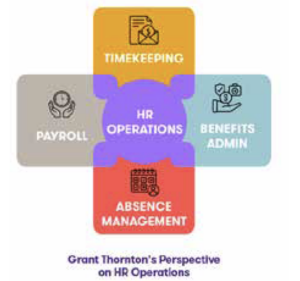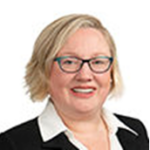In Part 1, we examined how HCM Systems implementations can facilitate organizational transformation by following several key principles: Considering Your Stakeholders, Ensuring Leadership Alignment and Vision, Understanding Your Operating Model and Design, and Elevating Your Talent Strategy. In this second part, we examine three more Success Drivers and finish with an overall Action Plan.
Success Driver #4: Compensation Practices
Compensation is called out here because many core HCM system elements are tied back to compensation practices, such as jobs, salary structures, and positions. If those practices need to be updated, standardized, and aligned with your business strategy, a new HCM system will not magically solve much, and your implementation will be complex and frustrating.
Revitalizing your compensation approach will enhance your organizational effectiveness. By aligning compensation practices with your business strategy, you will be more effective in attracting and retaining key talent, increasing competitiveness, and driving a high-performance culture.

Ideally, your company supports an entire ecosystem of compensation practices that stems from aligning your compensation philosophy with your business strategy. Determining your operating model first can then drive a high-performance culture while managing and mitigating human capital risks. Besides attracting, retaining, and motivating talent, you want to ensure fairness and equity in pay, align compensation with performance, incorporate market trends and benchmarks, and communicate policies transparently.
Compensation trends are shifting towards strategies that address the impact of inflation, promote equity and competitiveness, and place a growing emphasis on supporting the well-being of employees. Recent data trends highlight that half of all HR leaders believe a pay equity issue exists in their organization (7 Trends to Watch in Benefits and Compensation in 2024. SHRM). Only 44% of employees say their pay is linked to performance (Grant Thornton’s State of Work in America report “U.S. employees try to shape work environment.” 2023), and 50% of employees are worried that their wages will not keep up with inflation (The True Value of Data and AI in Human Resources. Forbes. December 2023).

Some signs that your compensation practices require focus include:
- Inconsistent compensation practices and/or complex setups across the organization
- Multiple sets of job codes, career ladders, and complex interfaces to other systems
- Variable incentives by division with complex workflows for approvals
Of course, an organization may have all three of these indicators and not need to work on their compensation practices if there is variation in the division because each division has an entirely different line of business and operating model. Healthcare organizations are particularly prone to complexity in this area, as acquiring multiple local health systems that perform similar care procedures but have different systems of job codes and pay practices can complicate merging these entities. This sometimes leads to incredibly complex HCM system implementations.
For instance, when an extensive healthcare system with over 23,000 employees wanted to implement a new HCM system, they discovered they had more than 6,000 job codes from the 15 different local health systems they had acquired in little more than a decade. Reporting was incredibly complex, with multiple back-end mapping tables used to group equivalent jobs. Frustration with course assignments in their learning management system was at an all-time high, to the point that the Learning and Development department was lobbying for a new learning management system (LMS), needing to understand that they would just be importing old problems into a new system.
We performed a job harmonization project that reduced 900 job codes for their core business to 258. Job levels, families, categories, and subcategories were created to facilitate easier metrics definition, reporting, and approval processes for compensation practices. The organization was able to move forward with the HCM system implementation, reporting, and dashboard development with unified key data elements across local health systems. This positioned the organization for success in implementing a new LMS.
Success Driver #5: HR Operations
HR operations is the home for several more administrative functions in HCM. Payroll (and timekeeping) is the most high-risk function because of compliance requirements with federal and state regulations and taxation. No organization wants to be known for paying their employees incorrectly. However, benefits and absence are a close second because they impact the employees’ well-being personally and can cost organizations in multiple unwanted ways if not administered correctly. The goal should be optimized payroll practices, technology-forward timekeeping and attendance tracking, streamlined benefits administration, and efficient absence management, with enhanced data accuracy as the backbone for HR processes and reporting.

Effective payroll, timekeeping, benefits administration, and absence management are the cornerstones of successful HCM system transformation. Organizations unlock many value-driven benefits by optimizing these critical HR operations. For example, managing scheduling in compliance with the required skills and licenses can enhance the employee experience, leading to higher morale, retention, and engagement.

Some signs that HR operations require focus include:
- Manual updates to time record files before loading in for payroll so that the timekeeping system is no longer the system of truth for time records
- Manual manipulation of eligibility and balances due to convoluted eligibility and grandfathered PTO plans defined sometimes at the employee ID level
- Missed shifts are uploaded as bonuses rather than corrections made in a timekeeping system.
Consider the same healthcare organization that had accumulated 1,840 deduction codes and 2,766 pay codes from 15 different local health systems acquired over a decade. As they started implementing a new enterprise resource planning (ERP) system for finance, supply chain, and human resources, part of the implementation of the HCM systems was delayed for nine months while finance worked on their new chart of accounts structure. The healthcare organization also had complex and disparate payroll processes at the local health system level.
The new system had the functionality to tie accounting codes to positions, which greatly simplified the number of deductions. Expenses could still be routed to the appropriate local entity without a separate deduction code. Pay codes were standardized across the organization for consistency. Retirement plan administration was streamlined to match the primary job for clarity and efficiency.
The streamlined processes and new functionality reduced the deduction codes to 280 and the consolidation of pay codes to 323. This greatly enhanced payroll’s accuracy and efficiency in processing and reporting and helped accelerate the transformation timeline with minimal disruptions.
Success Driver #6: Change Management
All the work to transform practices and implement systems will still not reach maximum ROI if change management is not a part of every project step. You want to proactively address resistance to change, communicate benefits and rationale early and often, and empower employees to embrace change through multiple support mechanisms. You want to establish clear milestones and success metrics but also be flexible to adapt strategies based on employee feedback.

A recent change management study found that only 34% of change initiatives succeed, yet 79.7% of people need to adapt their business every two to five years (WalkMe Change Management Statistics Infographic, 2024).

Some signs that your change management execution requires focus include:
- Employees resisting new processes, signaling the need for more proactive change management
- Stakeholders lack awareness or understanding of the change initiative, requiring educational efforts for clarity and buy-in
- The organization lacks managers and leaders who are role models of the behaviors and ways of working needed to inspire change
In one example, a federally funded organization needed to replace an aging HCM and ERP system. They knew they had a history of significant resistance to change from employees and leadership and felt a need for leadership alignment and support for the upcoming change.
We conducted stakeholder and sponsor interviews to foster strong relationships, developed a comprehensive strategy, including a case for change, with impact assessments and a communication plan, and helped the organization establish a change champion network with a leader playbook.
The organization successfully launched an HCM system within a tight six-month timeline. They gained leadership recognition for the value of the change management efforts. They supported the larger ERP implementation with change management as an adoption accelerator while minimizing disruption to the business.
Clear for Takeoff: Your HCM Action Plan
Depending on where your organization is in the transformation journey, this discussion can feel confirming or overwhelming. What’s most important is that you approach any HCM system implementation thoughtfully. Whether you are implementing a complete HCM platform, independently or as part of a more extensive ERP implementation, or just implementing an individual module, evaluate the relevant processes and practices and focus on any necessary transformations first. What works for one organization may or may not work for yours. While some industry standards exist, HCM practices are ultimately unique to your organization’s business strategy and operating model. Four action points can summarize the six success drivers discussed:
- Engage key executive leaders and stakeholders for alignment
- Refine the organization’s operating model
- Align talent strategy and HR practices with HCM and organizational objectives
- Optimize change management practices to drive employee engagement and maximize ROI
Take the time to incorporate these steps so that your HCM system implementation can take flight and achieve the maximum ROI expected—not just at go-live but for years to come!
References
7 Trends to Watch in Benefits and Compensation in 2024, SHRM, https://bit.ly/3C4rAYJ
U.S. Employees Strive to Shape Work Environment, Grant Thornton, https://bit.ly/4e6hKD4
The True Value of Data and AI in Human Resources, Forbes, https://bit.ly/3YuGUFB
Change Management Statistics You Need to Know, walkme.com, https://bit.ly/3YIJSaH


